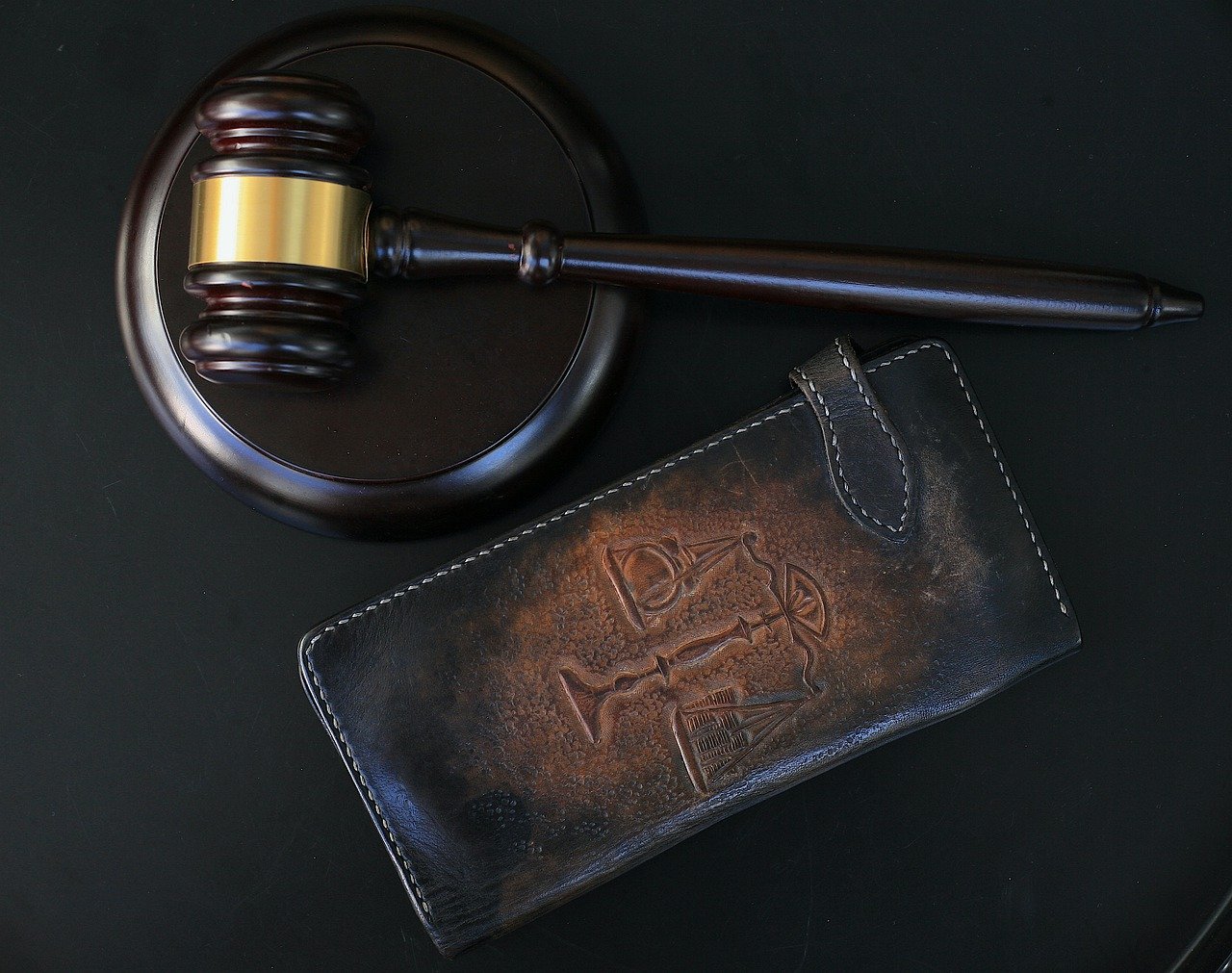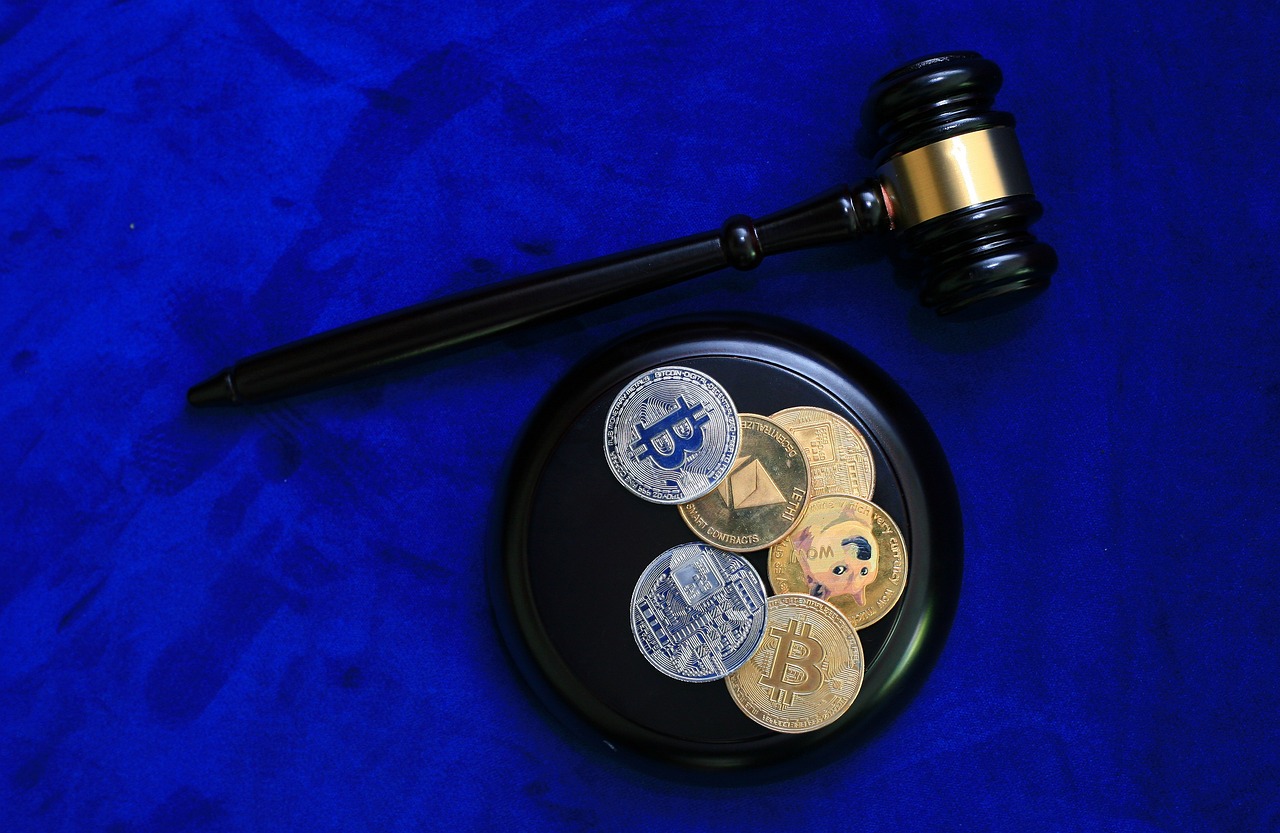Understanding the SEC's Role in Cryptocurrency Regulation
The world of cryptocurrency is like a wild west, filled with opportunities, risks, and a whole lot of confusion. As digital currencies continue to make headlines, one question looms large: Who's keeping an eye on this rapidly evolving market? Enter the U.S. Securities and Exchange Commission (SEC), the watchdog tasked with protecting investors and ensuring fair practices in the financial markets. In this article, we will dive deep into the SEC's pivotal role in regulating cryptocurrencies, exploring its impact on the market, the measures taken for investor protection, and the evolving legal landscape that surrounds this digital frontier.
The SEC's primary responsibility is crystal clear: to protect investors and maintain fair, orderly, and efficient markets. But how does this mandate translate into the world of cryptocurrencies? The SEC faces a unique set of challenges in this arena, primarily because cryptocurrencies often blur the lines between traditional assets and digital innovations. With thousands of cryptocurrencies available, each with its own unique characteristics, the SEC must navigate a complex landscape to determine the appropriate regulatory framework.
For instance, while some cryptocurrencies are designed purely as a medium of exchange, others may function more like investment contracts. This distinction is crucial because it dictates whether the SEC will classify a cryptocurrency as a security, subjecting it to stringent regulations. The SEC’s challenge lies in adapting its traditional regulatory approach to fit this new digital context while ensuring that investors are protected from fraud and market manipulation.
Determining whether cryptocurrencies qualify as securities is pivotal for regulation. This classification has far-reaching implications for both issuers and investors. The SEC employs specific criteria to assess whether a cryptocurrency meets the definition of a security. This involves examining the purpose of the cryptocurrency, the expectations of the investors, and the degree of control held by the promoters. If a cryptocurrency is deemed a security, it must comply with regulations that govern traditional securities, including registration and disclosure requirements.
At the heart of this classification process is the Howey Test, a legal standard used to determine if an asset is a security. The Howey Test originates from a 1946 Supreme Court case and consists of four criteria:
- There is an investment of money.
- The investment is in a common enterprise.
- There is an expectation of profits from the investment.
- The profits are generated by the efforts of others.
If a cryptocurrency meets all four criteria, it is classified as a security, which means it falls under the SEC's jurisdiction. This test is crucial for both investors and issuers, as it provides a framework for understanding the regulatory landscape.
Several high-profile cryptocurrencies have been classified as securities by the SEC, leading to significant ramifications for their issuers and the broader market. For instance, the SEC's actions against Ripple Labs, the issuer of XRP, have sent shockwaves through the cryptocurrency community. The SEC argued that XRP is a security because it was sold to investors in a manner that promised profits. This case has not only affected Ripple but has also prompted other cryptocurrency projects to reevaluate their own compliance with SEC regulations.
Initial Coin Offerings (ICOs) have particularly felt the SEC's regulatory heat. These fundraising mechanisms often resemble traditional securities offerings, leading the SEC to scrutinize them closely. Companies conducting ICOs must ensure compliance with securities laws, including the need for proper registration and disclosure. Failure to do so can result in hefty fines and legal consequences. The SEC's stance on ICOs has thus created a more cautious environment for startups looking to raise funds through this innovative method.
The SEC has taken several enforcement actions against various cryptocurrency projects, sending a clear message about its commitment to regulation. Notable cases include penalties against companies like Telegram and Block.one for their unregistered offerings. These enforcement actions not only hold companies accountable but also serve as a deterrent to others considering non-compliance. By taking decisive action, the SEC aims to foster a safer and more transparent cryptocurrency market.
To safeguard investors in the cryptocurrency space, the SEC implements a variety of measures. One of the primary initiatives is the establishment of clear guidelines for what constitutes a security in the digital realm. This clarity helps investors make informed decisions and reduces the likelihood of falling victim to fraudulent schemes.
The SEC actively engages in public awareness campaigns to educate investors about the risks associated with cryptocurrency investments. These campaigns utilize various strategies, including webinars, social media outreach, and informative publications. By promoting awareness, the SEC aims to empower investors to recognize potential scams and make informed choices in a market that can often feel overwhelming.
The SEC recognizes that effective regulation requires collaboration. It works closely with other regulatory bodies, such as the Commodity Futures Trading Commission (CFTC) and the Financial Industry Regulatory Authority (FINRA), to create a cohesive regulatory framework for cryptocurrencies. These partnerships enhance oversight and ensure that all aspects of the cryptocurrency market are adequately monitored.
Q1: What is the SEC's primary role in cryptocurrency regulation?
A1: The SEC's primary role is to protect investors and maintain fair markets, ensuring that cryptocurrencies are appropriately classified and regulated.
Q2: How does the SEC determine if a cryptocurrency is a security?
A2: The SEC uses the Howey Test, which evaluates factors like investment of money, common enterprise, expectation of profits, and efforts of others.
Q3: What are the implications of the SEC's stance on ICOs?
A3: ICOs must comply with securities laws, including registration and disclosure requirements, to avoid legal penalties.

The SEC's Mandate
The U.S. Securities and Exchange Commission (SEC) plays a pivotal role in maintaining the integrity of the financial markets. Its primary mission is to protect investors, ensure fair and efficient markets, and facilitate capital formation. But how does this mandate translate into the world of cryptocurrencies, a domain that often feels like the Wild West of finance? Well, it’s a complex landscape where traditional financial regulations meet innovative digital assets, creating unique challenges for regulators and market participants alike.
At its core, the SEC’s responsibility is to ensure that investors are well-informed and that the markets operate in a fair manner. With the rise of cryptocurrencies, the SEC has had to adapt its approach, addressing a multitude of issues that arise from this rapidly evolving sector. Cryptocurrencies, with their decentralized nature and often ambiguous legal status, present a challenge for the SEC in achieving its goals. The agency must navigate a fine line between fostering innovation and protecting investors from potential fraud and market manipulation.
One of the significant challenges the SEC faces is determining which cryptocurrencies should be classified as securities. This classification is crucial because it dictates the regulatory framework that applies to these assets. If a cryptocurrency is deemed a security, it must comply with stringent regulations designed to protect investors, including registration requirements and disclosure obligations. This brings us to the Howey Test, a legal standard that the SEC uses to evaluate whether an asset qualifies as a security. Understanding this test is essential for both issuers and investors, as it helps clarify the regulatory landscape.
Moreover, the SEC's mandate extends beyond just regulating securities. It also encompasses enforcement actions against fraudulent activities in the cryptocurrency space. The agency has ramped up its efforts to investigate and take action against projects that mislead investors or operate without proper registration. This proactive stance is vital in building trust within the market and ensuring that investors can engage in cryptocurrency trading with a sense of security.
In addition to enforcement, the SEC actively seeks to educate the public about the risks associated with investing in cryptocurrencies. Through various public awareness campaigns, the agency aims to inform investors about potential scams and the importance of conducting thorough research before investing in any digital asset. By fostering a more informed investor base, the SEC hopes to mitigate risks and promote a healthier market environment.
To summarize, the SEC's mandate is not just about regulation; it's about creating a safe and fair marketplace for all investors. As the cryptocurrency landscape continues to evolve, the SEC's role will be crucial in shaping the future of digital assets and ensuring that innovation does not come at the expense of investor protection.

Cryptocurrency as a Security
When it comes to cryptocurrency regulation, one of the most significant questions is whether these digital assets qualify as securities. This determination is crucial because it dictates the legal framework within which these assets operate. The U.S. Securities and Exchange Commission (SEC) has been at the forefront of this discussion, laying down criteria that help define the boundaries of what constitutes a security in the realm of cryptocurrencies. The implications of this classification are profound, affecting not only the issuers of these assets but also the investors who buy them.
To understand the SEC's perspective, we need to dive into the factors that influence this classification. Generally, if a cryptocurrency is deemed a security, it is subject to a host of regulations that aim to protect investors. This means that issuers must comply with strict reporting requirements, and they must also register their offerings with the SEC. On the flip side, if a cryptocurrency is classified as a utility token, it may escape some of these stringent regulations, allowing for more flexibility in its use and distribution.
But how does the SEC determine whether a cryptocurrency falls under the securities umbrella? This is where the Howey Test comes into play. Developed from a Supreme Court case in 1946, the Howey Test provides a legal framework for identifying whether a financial instrument is a security based on four criteria:
| Criteria | Description |
|---|---|
| Investment of Money | There must be an investment of money or other assets. |
| Common Enterprise | The investment must be in a common enterprise. |
| Expectation of Profits | Investors must have a reasonable expectation of profits. |
| Efforts of Others | Any profit must come from the efforts of others. |
Now, let’s break down these criteria a bit more. First, the investment of money is straightforward; if you’re putting your hard-earned cash into something, that’s a good start. Next, the idea of a common enterprise suggests that the fortunes of investors are tied together—think of it like a team effort where everyone is in it for the win. The expectation of profits is where things get interesting. If investors are hoping to make money, that adds another layer to the classification. Finally, the efforts of others criterion highlights that the success of the investment relies on the efforts of a third party, typically the developers or the organization behind the cryptocurrency.
Now, you might be wondering, “So what happens if a cryptocurrency is classified as a security?” Well, for issuers, this means they need to follow strict regulatory protocols, which can be a double-edged sword. On one hand, it provides legitimacy and investor confidence; on the other, it can stifle innovation and make it harder for new projects to launch. For investors, the classification can offer a layer of protection, ensuring that they are informed and safeguarded against fraud. However, it also means that the market dynamics can shift, impacting the value and liquidity of these digital assets.
As we explore the landscape of cryptocurrencies, it’s essential to keep an eye on the SEC's actions and decisions. The classification of cryptocurrencies as securities or not will continue to evolve, influenced by market trends, technological advancements, and public sentiment. Understanding this classification is crucial for anyone looking to navigate the cryptocurrency waters, whether you're an investor or an issuer.
- What is the Howey Test? The Howey Test is a legal standard used to determine if an asset is a security based on specific criteria.
- Why does the SEC classify cryptocurrencies? The SEC classifies cryptocurrencies to protect investors and ensure fair market practices.
- What are the implications for investors? If a cryptocurrency is classified as a security, it typically offers more regulatory protections for investors.

The Howey Test
The Howey Test is not just a legal formality; it’s a crucial benchmark that determines whether a particular asset qualifies as a security under U.S. law. Named after the landmark 1946 Supreme Court case, SEC v. W.J. Howey Co., this test has become a cornerstone in the regulation of various financial instruments, including cryptocurrencies. But what exactly does it entail, and why is it so significant for the crypto world? Let's break it down.
At its core, the Howey Test consists of four essential criteria that must be met for an asset to be classified as a security:
- Investment of Money: There must be an investment of money or other assets.
- Common Enterprise: The investment must be in a common enterprise, meaning the fortunes of the investor are tied to the success of the venture.
- Expectation of Profits: Investors must have a reasonable expectation of profits derived from the efforts of others.
- Efforts of Others: The profits should come primarily from the efforts of a third party or promoter.
So, why does this matter? Well, if a cryptocurrency meets all four criteria, it is classified as a security and thus falls under the regulatory purview of the SEC. This classification brings a slew of compliance obligations for issuers, including registration requirements and adherence to strict reporting standards. For investors, this means enhanced protections, but it also imposes limitations on how these assets can be marketed and sold.
Understanding the Howey Test is essential for anyone involved in the cryptocurrency market, whether you're an investor, developer, or simply a curious observer. It serves as a litmus test for the legitimacy of many crypto projects. If a project is deemed a security, it must navigate a complex regulatory landscape, which can be daunting but ultimately necessary for investor protection.
Moreover, the Howey Test has been applied in various scenarios since its inception, leading to significant legal precedents that shape the current cryptocurrency ecosystem. For instance, the SEC has scrutinized numerous Initial Coin Offerings (ICOs) through this lens, leading to several high-profile cases where projects were forced to alter their business models or refund investors.
In summary, the Howey Test is more than just a legal standard; it’s a vital tool for ensuring that the cryptocurrency market operates fairly and transparently. As the landscape continues to evolve, understanding this test will be crucial for anyone looking to navigate the complexities of cryptocurrency regulation.

Case Studies of Cryptocurrencies
When diving into the world of cryptocurrencies, it’s essential to examine specific case studies that illustrate how the U.S. Securities and Exchange Commission (SEC) has approached regulation. These case studies not only shed light on the SEC's criteria for classifying cryptocurrencies as securities but also reveal the broader implications for the market and investors.
One of the most notable examples is the case of Ripple (XRP). The SEC filed a lawsuit against Ripple Labs in December 2020, alleging that the company conducted an unregistered securities offering by selling XRP. The SEC argued that XRP met the criteria for a security under the Howey Test, primarily because it was marketed as an investment opportunity. This case has significant implications, as it raised questions about the status of other cryptocurrencies and how they might be treated under existing laws. Investors watched closely, as the outcome could set a precedent for future regulatory actions.
Another critical case is that of Telegram, which attempted to launch its own cryptocurrency, the Gram. The SEC intervened before the launch, claiming that the Gram tokens were securities and that Telegram had failed to register the offering. This situation highlighted the SEC's proactive stance in preventing what it viewed as potential investor harm. The company ultimately abandoned its plans, and this case serves as a cautionary tale for other projects considering similar paths.
Additionally, the Block.one case is worth mentioning. The company behind the EOS blockchain raised over $4 billion in an Initial Coin Offering (ICO) but faced scrutiny from the SEC. In 2019, Block.one settled with the SEC for $24 million without admitting wrongdoing. This case demonstrated the SEC's willingness to impose penalties on companies that fail to comply with securities laws, emphasizing the importance of regulatory compliance for cryptocurrency projects.
To further illustrate the impact of these cases, consider the following table:
| Cryptocurrency | SEC Action | Outcome | Implications |
|---|---|---|---|
| Ripple (XRP) | Filed lawsuit for unregistered securities | Ongoing | Potential precedent for other cryptocurrencies |
| Telegram (Gram) | Prevented ICO launch | Abandoned plans | Cautionary example for future projects |
| Block.one (EOS) | Settled for $24 million | Settlement without admission | Emphasized need for compliance |
These case studies not only highlight the SEC's active role in regulating the cryptocurrency space but also reflect the evolving legal landscape. As more projects enter the market, the SEC's actions will likely continue to shape investor confidence and the overall market dynamics.
In conclusion, understanding these case studies provides valuable insights into the SEC's regulatory approach and its implications for both issuers and investors. As we move forward, it’s crucial for cryptocurrency projects to stay informed about regulatory developments to navigate this complex environment successfully.
- What is the SEC's main role in cryptocurrency regulation? The SEC's primary role is to protect investors and maintain fair markets by ensuring that cryptocurrency offerings comply with securities laws.
- How does the SEC classify cryptocurrencies as securities? The SEC uses the Howey Test to determine if a cryptocurrency qualifies as a security based on certain criteria, including investment expectations.
- What can happen if a cryptocurrency is classified as a security? If classified as a security, the cryptocurrency must comply with registration requirements, which can impact its issuance and trading.
- What are the implications of the SEC's enforcement actions? Enforcement actions can lead to significant penalties for companies, influence market behavior, and set important precedents for future regulatory actions.

Implications for ICOs
Initial Coin Offerings (ICOs) have emerged as a popular method for startups to raise capital, but they have also attracted significant scrutiny from the U.S. Securities and Exchange Commission (SEC). The implications of this scrutiny are profound, affecting not only the way these offerings are structured but also how investors perceive them. When the SEC classifies an ICO as a security, it imposes a range of regulatory requirements that issuers must comply with to avoid legal repercussions. This can include registration, disclosure of financial information, and adherence to anti-fraud provisions. As a result, many startups are now faced with the challenge of navigating a complex regulatory landscape that can stifle innovation and deter potential investors.
Moreover, the SEC's stance on ICOs has led to a shift in how these fundraising mechanisms are approached. For instance, companies are increasingly opting for compliance-friendly ICOs that align with existing securities laws. This shift not only ensures legal protection but also builds trust with investors who are becoming more cautious in the wake of numerous scams and failed projects. The SEC's focus on investor protection means that issuers need to be transparent about their projects, providing detailed information regarding the use of funds, the technology behind the token, and the risks involved. This transparency is crucial in fostering a healthy market environment where investors can make informed decisions.
Another significant implication of the SEC's regulations on ICOs is the potential for increased costs and longer timelines for project launches. Startups may need to engage legal counsel to ensure compliance with the SEC's requirements, which can lead to substantial legal fees. Furthermore, the process of registering with the SEC can be time-consuming, delaying the launch of an ICO and potentially impacting market conditions. As a result, some entrepreneurs might consider alternative fundraising methods, like security token offerings (STOs), which may offer a more compliant route for capital raising.
In light of these challenges, it’s essential for potential investors to conduct thorough due diligence before participating in an ICO. Understanding the regulatory status of the offering and the background of the team behind the project can make a significant difference in investment outcomes. The SEC’s involvement has undoubtedly raised the bar for ICOs, encouraging a more responsible and less speculative approach to fundraising in the cryptocurrency space.
To summarize, the implications of SEC regulations on ICOs are multifaceted, influencing everything from compliance costs to investor trust. As the regulatory environment continues to evolve, both issuers and investors must stay informed to navigate this complex landscape successfully.
- What is an ICO? An Initial Coin Offering (ICO) is a fundraising method in which new projects sell their underlying crypto tokens in exchange for capital.
- How does the SEC classify ICOs? The SEC determines whether an ICO is a security based on various factors, including the Howey Test, which assesses the nature of the investment.
- What are the risks associated with investing in ICOs? Risks include lack of regulation, potential for fraud, and the volatility of cryptocurrencies.
- How can investors protect themselves in ICOs? Conducting thorough research, understanding the project's fundamentals, and being aware of regulatory compliance are key steps for investor protection.

Enforcement Actions
The U.S. Securities and Exchange Commission (SEC) has been quite active in enforcing regulations within the cryptocurrency sector. As the digital currency landscape evolves, the SEC has taken a firm stance to ensure that investors are protected and that the market operates fairly. You might wonder, why is this enforcement necessary? Well, with the rise of cryptocurrencies, there have been numerous cases of fraud, misleading information, and outright scams that have left investors vulnerable. The SEC's actions are designed to deter such behavior and to maintain trust in the financial system.
One of the most notable enforcement actions taken by the SEC was against Ripple Labs, the company behind the XRP token. In December 2020, the SEC filed a lawsuit alleging that Ripple's sale of XRP constituted an unregistered securities offering. This case has significant implications for the entire cryptocurrency market, as it raises questions about how various digital assets should be classified. The outcome could set a precedent for how cryptocurrencies are treated under U.S. law.
Another high-profile case involved Telegram, which faced legal challenges over its initial coin offering (ICO) for the TON blockchain. The SEC argued that Telegram's ICO was essentially a sale of unregistered securities. The SEC's intervention forced Telegram to abandon its project, highlighting the risks that companies face when they do not comply with regulatory requirements. This case serves as a cautionary tale for other startups in the cryptocurrency space.
In addition to these cases, the SEC has also pursued actions against numerous smaller projects and exchanges for various violations, including:
- Failure to register as a securities dealer.
- Misleading investors about the nature of the investment.
- Engaging in fraudulent activities.
These enforcement actions not only penalize wrongdoers but also serve to educate the market. By publicly addressing these issues, the SEC sends a clear message that it is serious about regulation and investor protection. This, in turn, helps to establish a more trustworthy environment for legitimate projects and investors alike.
As the regulatory landscape continues to shift, it's essential for investors and companies to stay informed about the SEC's actions and the implications they carry. The SEC's enforcement actions play a crucial role in shaping the future of cryptocurrency regulation, ultimately influencing how the market operates and how investors engage with these digital assets.
Q: What is the SEC's primary role in cryptocurrency regulation?
A: The SEC's primary role is to protect investors and maintain fair, orderly, and efficient markets. It does this by enforcing securities laws and regulations that apply to cryptocurrencies.
Q: How does the SEC determine if a cryptocurrency is a security?
A: The SEC uses the Howey Test, which assesses whether an asset is an investment contract based on the expectation of profits derived from the efforts of others.
Q: What happens if a cryptocurrency project does not comply with SEC regulations?
A: Non-compliance can lead to enforcement actions, including fines, penalties, and the cessation of operations. Projects may also face legal battles that can significantly impact their reputation and viability.
Q: How can investors protect themselves in the cryptocurrency market?
A: Investors can protect themselves by conducting thorough research, being cautious of projects that promise unrealistic returns, and staying informed about regulatory developments.

Investor Protection Measures
The digital landscape of cryptocurrencies can be as thrilling as a roller coaster ride, but it also comes with its fair share of risks. To navigate this complex terrain, the U.S. Securities and Exchange Commission (SEC) has implemented a variety of designed to safeguard individuals venturing into the world of crypto. These measures are not just a safety net; they are essential for fostering trust and stability in a market that can often feel like the Wild West.
One of the key initiatives is the SEC's focus on educating investors about the inherent risks associated with cryptocurrency investments. This education is crucial because many potential investors may not fully understand what they are getting into. The SEC has launched various public awareness campaigns aimed at informing individuals about the volatility and potential pitfalls of investing in digital assets. Through these campaigns, the SEC emphasizes the importance of conducting thorough research and understanding the fundamentals of the assets they are considering.
Moreover, the SEC actively encourages investors to ask the right questions before diving into any investment. For instance, they advise potential investors to consider the following:
- What is the purpose of the cryptocurrency?
- Who is behind the project?
- Is there a clear business model?
- What are the risks involved?
These questions serve as a guide, helping investors to make informed decisions rather than jumping into investments based solely on hype or speculation.
In addition to education, the SEC has established a framework for compliance and enforcement that holds cryptocurrency projects accountable. This framework aims to ensure that companies offering digital assets adhere to the same standards as traditional securities. By doing so, the SEC not only protects investors but also promotes a fair market environment. The SEC has the authority to take enforcement actions against those who violate securities laws, which serves as a deterrent to fraudulent activities.
Another significant aspect of the SEC's investor protection measures is its collaboration with other regulatory bodies. By working alongside organizations like the Commodity Futures Trading Commission (CFTC) and the Financial Industry Regulatory Authority (FINRA), the SEC creates a more cohesive regulatory landscape. This collaboration ensures that there are no regulatory gaps that could potentially harm investors. Together, these agencies can share information and resources, enhancing their collective ability to monitor and regulate the cryptocurrency market effectively.
Furthermore, the SEC has also introduced initiatives aimed at protecting vulnerable investors, such as those who may not have extensive knowledge of financial markets. For example, the SEC's Office of Investor Education and Advocacy provides resources and tools specifically designed for novice investors. These resources include guides, FAQs, and online seminars that cover various topics related to cryptocurrency investing.
In summary, the SEC's investor protection measures play a crucial role in maintaining a safe and fair marketplace for cryptocurrencies. Through education, regulatory enforcement, and collaboration with other agencies, the SEC strives to create an environment where investors can feel secure in their investments. As the cryptocurrency landscape continues to evolve, these measures will likely adapt to meet new challenges and ensure that investor protection remains a top priority.
Q1: What is the SEC's role in cryptocurrency regulation?
The SEC's role is to protect investors and maintain fair markets by regulating cryptocurrency offerings and ensuring compliance with securities laws.
Q2: How does the SEC educate investors about cryptocurrency risks?
The SEC conducts public awareness campaigns and provides resources to help investors understand the risks associated with cryptocurrency investments.
Q3: What happens if a cryptocurrency project violates SEC regulations?
The SEC can take enforcement actions against projects that violate securities laws, which may include fines, penalties, or legal actions.
Q4: How does the SEC collaborate with other regulatory agencies?
The SEC works with agencies like the CFTC and FINRA to create a cohesive regulatory framework and enhance oversight of the cryptocurrency market.

Public Awareness Campaigns
The U.S. Securities and Exchange Commission (SEC) has recognized that knowledge is power, especially in the rapidly evolving world of cryptocurrencies. With the market's volatility and the potential for scams, the SEC has launched various aimed at educating investors about the risks associated with cryptocurrency investments. These campaigns are not just about spreading information; they are designed to empower investors to make informed decisions and to encourage a culture of due diligence.
One of the key strategies employed by the SEC is the use of educational resources that are easily accessible to the public. This includes webinars, online guides, and social media outreach. For instance, the SEC's website features a dedicated section on cryptocurrencies where investors can find information on how to identify fraudulent schemes, understand market risks, and learn about the importance of regulatory compliance. The goal is clear: to create a well-informed investor base that can navigate the complexities of the crypto market.
Additionally, the SEC collaborates with various organizations and community groups to amplify its message. These partnerships help to reach a broader audience, ensuring that information is disseminated widely. By hosting events and participating in forums, the SEC not only educates investors but also engages with them directly, answering questions and addressing concerns in real-time. This two-way communication fosters trust and transparency, which are essential in an industry often plagued by uncertainty.
Moreover, the SEC employs a variety of communication channels to cater to different demographics. For younger, tech-savvy investors, social media platforms like Twitter and Instagram are utilized to share bite-sized information that captures attention quickly. Conversely, for older investors who may prefer traditional methods, newsletters and community workshops are organized. This tailored approach ensures that the SEC's message resonates with a diverse audience, making the campaigns more effective.
Ultimately, the effectiveness of these public awareness campaigns can be measured by their impact on investor behavior. A recent survey indicated that a significant percentage of investors felt more confident in their ability to identify scams after participating in SEC-led educational initiatives. This is a positive sign that the SEC's efforts are not just theoretical but are translating into real-world benefits for investors.
In conclusion, the SEC's public awareness campaigns play a crucial role in enhancing investor knowledge and promoting a safer cryptocurrency environment. By equipping individuals with the necessary tools and information, the SEC aims to foster a culture of informed investing, thereby reducing the likelihood of fraud and enhancing overall market integrity.
- What is the SEC's role in cryptocurrency regulation?
The SEC's role is to protect investors and maintain fair markets by regulating cryptocurrencies and ensuring compliance with securities laws. - How does the SEC determine if a cryptocurrency is a security?
Through the Howey Test, which assesses whether an asset is an investment contract based on certain criteria. - What are the implications of the SEC's stance on ICOs?
ICOs may be subject to stringent regulations, requiring compliance with securities laws, which can impact their operations and fundraising abilities. - How can I stay informed about SEC regulations?
By following the SEC's official website, subscribing to newsletters, and participating in educational programs offered by the agency.

Collaboration with Other Agencies
The landscape of cryptocurrency regulation is not a solitary endeavor for the SEC. In fact, it thrives on collaboration with other regulatory agencies to create a robust framework that can effectively address the complexities of digital assets. The SEC recognizes that the rapidly evolving nature of cryptocurrencies necessitates a multi-faceted approach, where different agencies bring their unique expertise to the table. For instance, the SEC often works alongside the Commodity Futures Trading Commission (CFTC), which oversees derivatives and futures markets, to ensure that the regulations are comprehensive and cohesive.
This collaboration helps in establishing clear guidelines that can protect investors while fostering innovation. One of the key areas of joint effort is in defining the regulatory boundaries between securities and commodities. The SEC and the CFTC have engaged in discussions to delineate which cryptocurrencies fall under their respective jurisdictions. Such clarity is vital for market participants, as it helps them understand their obligations and the regulatory landscape they operate within.
Moreover, the SEC's partnerships extend beyond just the CFTC. They often collaborate with the Financial Crimes Enforcement Network (FinCEN) to tackle issues related to money laundering and fraud that can arise within the cryptocurrency ecosystem. By sharing intelligence and resources, these agencies can better identify suspicious activities and enforce compliance among cryptocurrency exchanges and service providers.
In addition to these collaborations, the SEC also engages with international regulatory bodies. The global nature of cryptocurrency markets means that regulatory efforts must transcend borders. The SEC's involvement in organizations like the International Organization of Securities Commissions (IOSCO) allows for a more synchronized approach to regulation, ensuring that best practices are shared and adopted worldwide.
To illustrate the significance of these collaborations, consider the following table that outlines some key partnerships and their focus areas:
| Agency | Focus Area |
|---|---|
| Commodity Futures Trading Commission (CFTC) | Defining jurisdiction between securities and commodities |
| Financial Crimes Enforcement Network (FinCEN) | Combatting money laundering and fraud |
| International Organization of Securities Commissions (IOSCO) | Global regulatory best practices |
Ultimately, the SEC's collaborative efforts are aimed at fostering a regulatory environment that not only protects investors but also encourages innovation in the cryptocurrency space. By pooling resources, knowledge, and expertise, these agencies can navigate the complexities of digital assets more effectively. As the market continues to evolve, such collaborations will be crucial in ensuring that regulations keep pace with technological advancements and market dynamics.
- What is the SEC's role in cryptocurrency regulation? The SEC's primary role is to protect investors and maintain fair markets, which includes overseeing the classification and regulation of cryptocurrencies.
- How does the SEC determine if a cryptocurrency is a security? The SEC uses the Howey Test, which evaluates whether an asset meets specific criteria to be classified as a security.
- Why is collaboration with other agencies important? Collaboration allows for a more comprehensive regulatory framework that addresses the complexities of cryptocurrencies and protects investors effectively.
- What are some challenges the SEC faces in regulating cryptocurrencies? Rapid market changes, technological advancements, and the decentralized nature of cryptocurrencies present significant challenges for regulation.
Frequently Asked Questions
- What is the SEC's role in cryptocurrency regulation?
The SEC, or U.S. Securities and Exchange Commission, plays a vital role in regulating the cryptocurrency market. Its primary goal is to protect investors and ensure fair and efficient markets. This involves overseeing how cryptocurrencies are classified, particularly whether they are deemed securities, and enforcing compliance with existing laws.
- How does the SEC determine if a cryptocurrency is a security?
The SEC uses a legal framework known as the Howey Test to determine if a cryptocurrency qualifies as a security. This test evaluates whether an investment is in a common enterprise with an expectation of profits primarily from the efforts of others. If a cryptocurrency meets these criteria, it is subject to SEC regulations.
- What are some examples of cryptocurrencies classified as securities?
Several cryptocurrencies have been classified as securities by the SEC, including Ripple (XRP) and Telegram's TON. These classifications often lead to significant market implications, affecting how these assets can be traded and marketed.
- What are the implications of SEC regulations on Initial Coin Offerings (ICOs)?
ICOs must comply with SEC regulations if their tokens are classified as securities. This means they need to register with the SEC or qualify for an exemption. Non-compliance can lead to severe penalties, including fines and the shutdown of the project.
- What enforcement actions has the SEC taken against cryptocurrency projects?
The SEC has taken numerous enforcement actions against various cryptocurrency projects for violating securities laws. Notable cases include actions against companies like BitConnect and ICOs that failed to register. These actions serve as warnings to other projects about adhering to regulations.
- How does the SEC protect investors in the cryptocurrency space?
The SEC implements several measures to safeguard investors, including public awareness campaigns that educate about the risks associated with cryptocurrency investments. They also provide resources to help investors identify scams and understand their rights.
- What is the SEC doing to increase public awareness about cryptocurrency risks?
The SEC actively engages in public awareness campaigns aimed at educating investors about the potential risks of investing in cryptocurrencies. These campaigns often include informational materials, social media outreach, and community events to help investors make informed decisions.
- Does the SEC collaborate with other agencies regarding cryptocurrency regulation?
Yes, the SEC collaborates with other regulatory bodies, such as the Commodity Futures Trading Commission (CFTC), to enhance oversight of the cryptocurrency market. These partnerships aim to create a cohesive regulatory framework that promotes investor protection and market integrity.



















